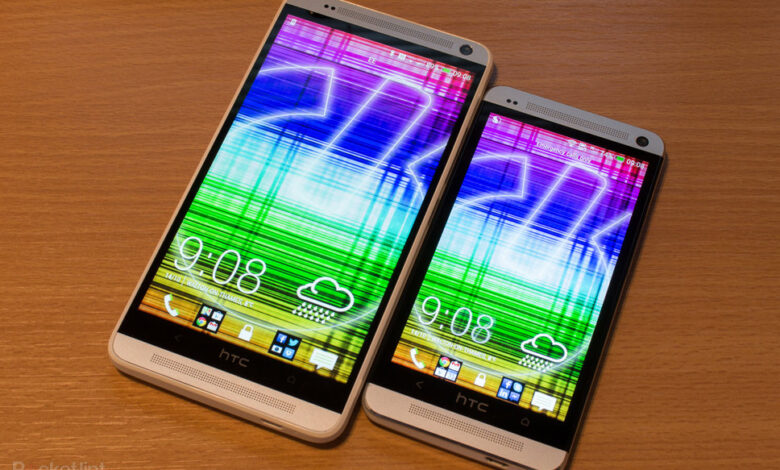From HTC Sense to One UI and everyt

(Pocket-lint) – The Android skin – that software layer that manufacturers plaster over the top of Android – has always been a controversial thing.
The skin has been both the saviour of Android as a mobile platform and the greatest downfall of a manufacturer; skins have made the experience, destroyed the experience, and brought frustration and joy in equal measure.
It’s been blamed for lag, duplication, bloatware; accused of delaying updates to the latest version of Android; or the main reason people choose one brand over another.
But where did all this start?
2008: Android’s crude beginnings
Roll back to 2008 and the launch of the T-Mobile G1 – or the HTC Dream – and Android was a fairly crude operating system, a poor cousin to Apple’s iOS which launched the year before on the first iPhone and lacking some of the refinement in RIM’s devices like the mighty BlackBerry Bold.
But it was bubbling with potential and there was something about Android that appealed to many. It was open source and easy to customise and that led to hacking, jacking and modding by fans and corporations, providing an opportunity for variety that rivals lacked.
Android was designed to be everywhere and run everything, and a decade later it has achieved that.
2009: HTC Sense gives us a Hero
HTC had arguably the biggest influence on Android in the early days. The company made the first Android devices – the G1 as an OEM and then G2 with HTC branding. But it was the launch of the HTC Hero in 2009 that did something much more important – it introduced HTC Sense.
The aim of HTC Sense was to cut through the crudity of Android and bring with it “moments of joy”. It wasn’t all new: a lot of HTC Sense had previously been used in HTC TouchFlo on its Windows Mobile devices, like the HTC Diamond. HTC Sense became characterised by its heavy use of home screen widgets, multiple home pages, social network aggregation and obsession with weather.
HTC Sense, while providing a lot of refinement to the average user, was seen as sluggish and blamed for slowing down HTC’s phones – fuelling the desire for many to do their own thing. Indeed, in 2011, HTC unlocked bootloaders to allow for easier modding. By 2012 HTC was saying that HTC Sense was becoming too complicated, but as HTC started to slide, others started to rise.
2009: Motorola gets in a Droid Blur
Motorola is arguably the greatest mobile phone company of all time. Motorola worked with Google and Verizon on Droid-branded handsets which did a huge amount for the visibility of Android in the US. Globally the story was slightly different.
Motoblur – launching on the Moto Dext/Cliq in 2009 – was an Android skin attempted to fuse things like social networks together and help you stay on top of your digital life. It was a bit of a mess as Motorola aimed to match Palm Synergy and BlackBerry’s Universal Inbox.
Motoblur didn’t last long: Motorola divided its company in 2011 and Motorola Mobility became part of Google in 2012 and then part of Lenovo in 2014, spitting out the Nexus 6 in the process and giving birth to the Moto G family.
The 2014 Moto G was, arguably, the most significant phone in the Motorola Android story, focusing on affordability, but also shipping pretty much in a stock Android state – the first non-Nexus device to really do so. It also asked the question – do we need Android skins at all, something that’s still perfectly valid today.
2009: A mod army emerges
Almost as soon as Android became available, people started modding it. CyanogenMod is the best known, having been a favourite build for those who wanted to boost the performance of their device, or use features not yet released by Google.
Cyanogen ran into trouble with Google in 2009 for including elements in the build (like Maps and YouTube) that Google wanted to retain control of in its own distributions. By 2013, CyanogenMod had its own installer on Google Play to make things easy.
CyanogenOS – a commercial version of the mod – was on some versions of the OnePlus One in 2014 before OnePlus launched its Oxygen OS in 2015. Oppo also dabbled with offering Cyanogen Mod as an installable alternative to ColorOS on devices like the Oppo N1 and British brand WileyFox thought it was an attractive USP for its ill-fated devices.
Custom ROMs are often seen as a lifeline for older devices, allowing the Android community to add features when official manufacturer support runs out. In 2016, Cyanogen hit the end of the line – to evolve into LineageOS – but many mods are still running and popular.
2010: Arise Samsung TouchWiz
Samsung’s first Android phone – the Galaxy i7500 – was stock Android, but Samsung found form in 2010 with the launch of the Samsung Galaxy S. It introduced TouchWiz to Android, having previously taken a turn on Samsung’s Omnia Windows Mobile devices, so in many ways, TouchWiz evolved like HTC Sense, moving between platforms.
The Samsung Galaxy S with TouchWiz was immediately likened to the iPhone, following many of the same skeuomorphic design leads, but Samsung continued with TouchWiz until the name was dropped in favour of Samsung Experience UX, and more recently One UI. But there has been a clear evolution from the first Galaxy S to the most recent devices.
Around the same time as the growth of Android, Samsung was working on its own Bada and Tizen devices. Commentators said at the time – and still do – that Samsung was working on its own platform to reduce the risk of committing to Google’s Android entirely. That might have abated somewhat with Samsung in 2021 sitting closer to Google than ever before.
But Samsung does own the experience. Not only does Samsung have massive global market share, it’s the most consistent and fully-featured Android skin, avoiding some of the questionable UX decisions of (particularly) Chinese rivals. If there’s a master of the Android skin, we have to say it’s Samsung.
2010: What about Mi?
Meanwhile in China a different market was developing. Xiaomi considers itself to be a software company first and MIUI is its child. First launched in 2010 – around the same time as other Android skins – the MIUI ROM was made available for a wide range of devices from other manufacturers – Samsung, Sony, HTC – while also running on Xiaomi’s own phones, which also included additional Mi services.
After a spat between the Chinese government and Google in 2014, all Google’s services were banned in China and Xiaomi removed them, leaving Xiaomi to fill in the gaps with its own products. In international releases, however, Google services work just fine, but it’s still a heavy skin with a lot of customisation.
Xiaomi has relented slightly, launching the Xiaomi Mi A2 with Android One, but MIUI is very much of the “change everything” school of thought. In 2017, Xiaomi confirmed that MIUI had over 300 million active users, so it’s not going anywhere.
2013: Getting in touch with Emotion (UI)
Huawei took to the stage in London in 2013 to launch the Ascend P6, along with Emotion UI, which first surfaced in 2012. It was the start of an aggressive European expansion as Huawei looked to new markets. Richard Yu, Huawei CEO, claimed that Emotion UI had “hundreds of improvements” over stock Android and firmly rejected the idea of a “Google Edition” or “Nexus Experience” at the time. It was claimed that the software skin sitting on Android added “emotion” that Google’s software lacked.
Emotion UI became EMUI, still used on Huawei phones. Since the US ban on Huawei, the company has had to move away from Google services, replacing these with its own services, but still maintaining EMUI running on Android very much as it was before.
2015: OxygenOS – a breath of fresh air?
We mentioned CyanogenOS on the OnePlus One previously, so let’s continue with the OnePlus story. In the early years of OnePlus, we remember hearing people say “it’s not Android, it’s OxygenOS”, but OxygenOS is one of the skins that better accommodated Android’s developing skills.
That’s an interesting point of differentiation from Oppo, the sister brand from the same parent company. While OxygenOS is generally well received by Android fans, Oppo offers its own skin ColorOS, which changes a lot for little apparent return. There’s a marked difference in approach between Oppo and OnePlus.
Certainly, in many cases, OnePlus appears to have the edge, offering fast updates and a strong community. It is also generally considered to do a better job of keeping Android running fast, remaining one of the better experiences in skinned Android devices.
Going naked: A pure Android future?
The early Android phones weren’t the best and it was no surprise to see the rise of alternatives – HTC and Samsung particularly pulled this along (LG and Sony played their part among others, but not to such a huge degree), but then we saw the emergence of the Nexus as Google worked with those same manufacturers on phones of its own.
The advantage that Nexus and then Pixel offered was faster updates – something that’s been the bugbear of Android since inception. While Apple lauds it over Google, shifting huge numbers of users to the latest software in one fell swoop, Android staggers from update to update with a drunken uncertainty.
The emergence of programmes like Android One was supposed to change that. Nokia has become the poster child for Android One, and for Android 10 it pushed out updates far faster than companies like Samsung, but for Android 11 it seems to have stumbled a little, pushing those updates slower than big rivals.
But does this signal the end of the Android skin? No it doesn’t. The likes of Samsung and Oppo are hanging on to their own interfaces and at the end of the day, they are two or the biggest smartphone companies on the planet.
Writing by Chris Hall.





